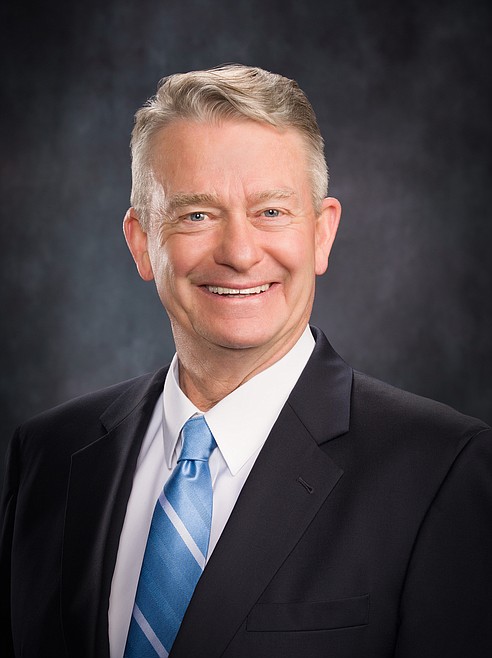Mom pleads for help for veteran son with COVID
▶️ Listen to this article now.
An Idaho woman pleaded with Gov. Brad Little to do something for her son who is battling COVID-19.
“I can’t get help for this veteran who fought for our country,” she told Little through tears during an hour-long AARP telephone town-hall on Tuesday.
The woman, Patricia, said her Grangeville son got COVID-19, had a stroke and was flown to a Spokane hospital.
A week later, his wife fell ill with the novel coronavirus and was also flown to Spokane.
“She is now up there fighting for her life,” Patricia said.
Her anger rose when she went to visit her son and was told he was being discharged.
The woman said she was told if she didn’t take her son, he would be transferred to a homeless shelter. At the time, she said he couldn’t speak or walk.
“He is a veteran," she said. "He fought for our country.”
“We need to take better care of our veterans,” she added later.
Patricia took her son to her Boise home, but at 78 years old said it’s difficult to care for him and has had trouble filling prescriptions.
She said she called several veteran services phone numbers Monday and was turned away.
“I need help,” she said, crying. “Who do I go to?”
The governor assured her he would get things started.
A minute later, Little gave her a phone number, 208-780-1380, for the Idaho Division of Veteran Services. Veterans like her son should not fall through the cracks, he said.
“That’s exactly what their job is,” Little said.
He called it frustrating and added, “Sometimes we’re not as organized as we like.”
He said officials spent a lot of time during COVID making sure there was room in veterans homes. He was surprised to hear a veteran was having trouble receiving help or was turned down.
“I hope it was a miscommunication,” he said. “I hope it wasn’t true.”
The woman thanked him and urged people to get vaccinated.
“Please, please go get a vaccine,” she said.
Many have.
In Idaho, 853,093 people are fully vaccinated. Fifty-seven percent of the 12 and older population is fully vaccinated, while 81% of the 65 and older population is fully vaccinated.
The Department of Health and Welfare lifted the standards of care for the state, except in North Idaho. That's because new cases and hospitalizations here are still too high, Idaho Department of Health and Welfare Director Dave Jeppesen said.
When asked why the Panhandle stood out, Little said it’s one of the fastest-growing parts of the state.
“There’s just a lot of people there,” he said.
In Kootenai County, 65,952 people age 12 and over are fully vaccinated, 46%. The only North Idaho county with a higher rate is Benewah, at 50%, while the lowest is Boundary at 37%.
The governor said eastern Washington and western Montana have also experienced trouble with higher COVID-19 incident rates.
“Surges are regional in nature," he said. “Very few of them is the state line a hard line.”
He also said the delta variant has been “really hard on Idaho.”
Jeppesen said falling positivity rates in North Idaho are a good sign. PHD’s positivity rate for COVID-19 is 10.2%. On Oct. 2, it was 23.1%.
Kootenai County’s positivity rate is 9.4%. It reached 23% on Oct. 2. Bonner County's positivity rate is 12.4%, down from 21.1% on Oct. 2. Boundary County's positivity rate is 15.2%, down from 34.1% on that date. Shoshone County's most recent positivity rate is 9.2%, down from 34.2% in mid-October; while Benewah County's most recent positivity rate is 6.6%, compared to 26.2% in mid-September.
Kootenai Health had 60 COVID-19 patients on Tuesday, with 27 requiring critical care. In early October, it had 150 COVID patients and 43 in critical care.
So, the area is trending in the right direction.
“We should see that come out of crisis standards of care as that happens,” Jeppesen said.
The number one way people can help North Idaho get out of crisis standards of care, he added: Get vaccinated.

